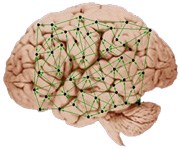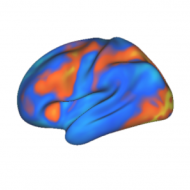 3) Functions are distributed in the brain (Flourens – 1824, Lashley – 1929)
3) Functions are distributed in the brain (Flourens – 1824, Lashley – 1929)
Flourens found that it did not matter where he lesioned inside cortex; what mattered was how much he lesioned. This suggested that functions were equally distributed (the law of equipotentiality) and widely distributed (the law of mass action) across cortex. Lashley updated this research by acknowledging localized functions in primary sensory-motor cortex (see tomorrow's entry), labeling the rest of cortex 'association cortex'.
Modern research has shown that Flourens and Lashley just weren't looking hard enough. Equipotentiality does not hold true (i.e, there is specialization within association cortex), but there is a great deal of mass action in the form of distributed network interaction across association cortex.
Implication: The mind is implemented in an electric organ with distributed function.
[This post is part of a series chronicling history's top brain computation insights (see the first of the series for a detailed description)]
-MC

I have often suspected that the above kind of result, combined with the early stimulation studies which showed that muscle responses or sensation only occured when primary areas were stimulated, is what led to the folk psychology notion that people "only use 10% of their brain".
-PL
Yes, I’ve actually read historical accounts of Lashley’s work inspiring the “only 10% of the brain is used” fallacy. His rats could recover from almost any lesion he gave them, so it seemed that we only need a small portion of our brain in the end. It’s ironic that this was the popular interpretation, though, since Lashley emphasized equipotentiality (that the whole brain contributed to function equally).
-MC
PL, I’m wondering what you think of an article I wrote last year about the 10% myth. It touches on your points, exactly.
http://www.stroke.org/site/PageServer?pagename=SS_MAG_ma2007_brain
Love Neurevolution, by the way. Thanks!